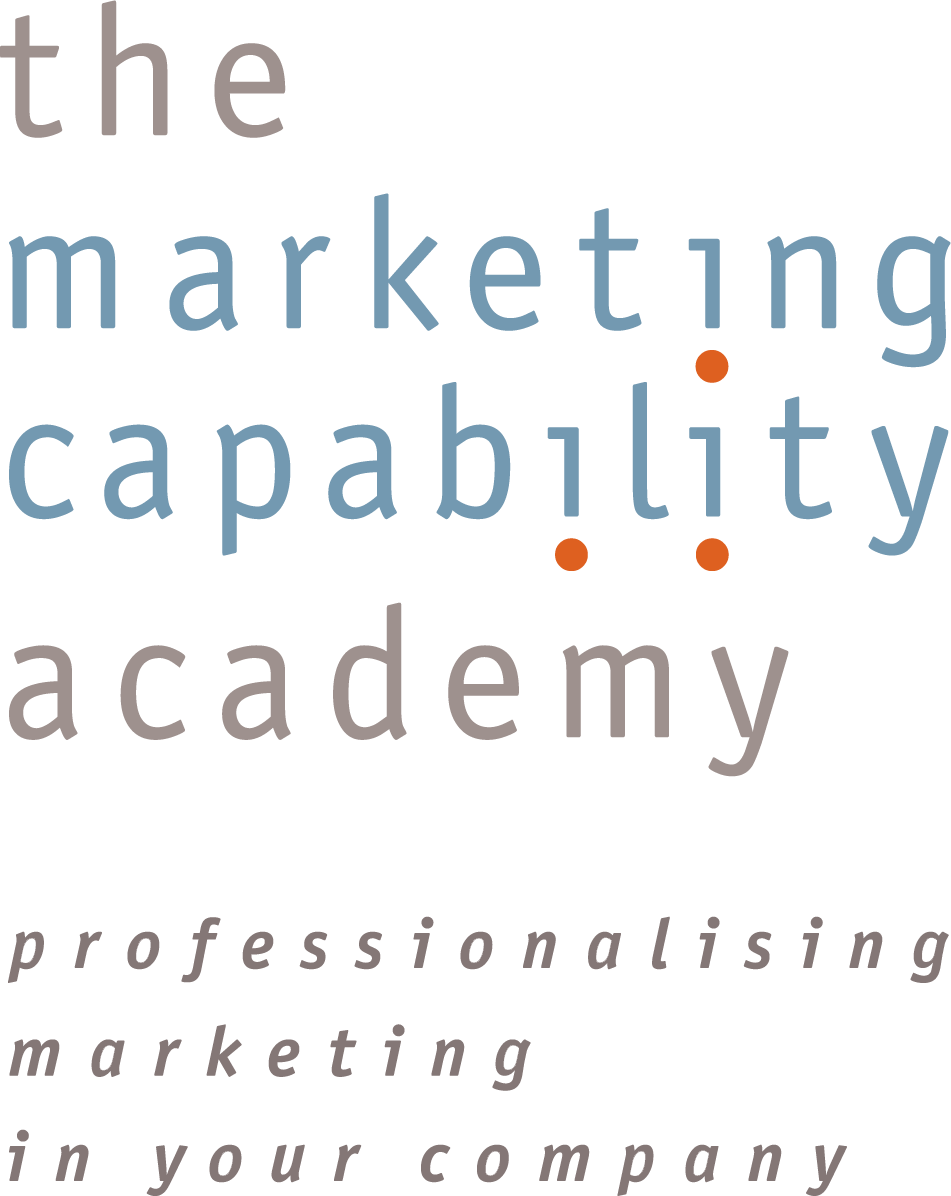

Unboxing
Marketing Capabilities are about training a Marketing Team to make them stronger, so they can build stronger Brands. Like with a football team, it is not enough to hire the best talents to win. It is essential to train them to be more capable than their competitors.
It is proven: there is a linear correlation between the level of Marketing Capabilities of a team and the performance of the Brands they manage. (See e.g.: http://www.mckinsey.com/business-functions/marketing-and-sales/our-insights/building-marketing-and-sales-capabilities-to-beat-the-market).
Marketing Capabilities capture the complex combination of knowledge, processes, ways of working, tools and best practices that make a difference in Brand building. From my experience as Director of Global Marketing Capabilities at HEINEKEN, Marketing Capabilities may be divided into 3 types.
3 types of Marketing Capabilities

1. Fundamental Marketing Capabilities. These are the basic Brand building skills that most consumer-oriented and brand-driven companies would have as operating standard. Until the last decade, a company with effective Marketing Foundations and with a reasonable discipline would live comfortably on its capability legacy. Newcomers would be trained, and the knowledge cascaded without significant changes. Here a few examples of Fundamental Marketing Capabilities:
- Consumer Insights, or the capability to unlock a core set of human beliefs and practices that will guide all strategies and executions around the Brand
- Portfolio Management, to guide the choice on where to play and select the brands needed to unlock the opportunity
- Brand DNA, to define the original assets of the Brand, that will make the Brand Promise credible
- Brand Positioning, to capture the Brand Promise, Personality and Reason to Believe
- Integrated Brand Communication, to develop media-relevant content and ensure that the messages are consistent and synergistic
- Pricing, to manage one of the key variables of Revenue Management
- Promotion Planning and Assessment, to ensure the max ROI
- Brand Design, to make all the visuals of the Brand memorable, consistent and impactful
- Brand Planning, to harness all brand activities and direct them towards one goal.
2. Transformational Marketing Capabilities. These are capabilities that bring a fundamental transformation in the way of building Brands, and that is often the result of dynamics that happen at broader level, like for example the Digital Transformation. Viral Content, Precision Marketing, Programmatic Media , Brand Reputation and E-commerce are capabilities that requires Brand Teams to change the game and adopt a new language, toolkits, benchmarks.
3. Marketing Capabilities to deliver the Must Win Battles. A new Company Ambition, a new Vision often take a company into a new space, which requires a change in the way of working, as targeting a new challenge with old ammunition will not work. Typical capabilities are:
- Innovation: in some categories, acceleration of the Innovation cycle is key to keep/regain competitiveness. It will not be enough for the teams to work faster…they will need the capabilities to innovate like the best in class do.
- Creativity: the digital clutter and the increasing ability of consumers to skip ads requires brand to think carefully about the effectiveness of their media budget. Only those Brands that are able to create impact, engage and surprise consumers will be able to gain their fair share of attention and earn the opportunity to communicate their message.
- Premiumization. A company with the ambition to win in the Premium Segment will need their Marketing team to be expert in building Premium Brands and master Premium Marketing Capabilities. Positioning of Premium Brands, Commanding Premium Pricing, Building a Premium Brand Equity, Premium Packaging Design, Premium Brand Experience, etc. are capabilities that Marketers can learn.
Capable Marketers, still …

Every company with a Marketing team will have Marketing Capabilities in some shape or form. Some have already long believed in the importance of developing their Marketing function and have built their own multi-year program to train and develop their teams with a proprietary curriculum. They have a set of interdependent approaches, tools and best practices that are customized to meet the needs of the category(ies) they compete in, and are embedded in the way of working to ensure consistency at all levels of the Marketing organization.
Other companies have more dispersed marketing expertise, but this does not necessarily mean that their marketers individually are less capable. It rather means that the knowledge of the single individuals is not harnessed to the benefit of the broader organization.
Mergers and acquisitions often bring new waves of knowledge that add richness and complexity to the way people work, and create enclaves of expertise within teams or geographies. Here it becomes essential to harmonize the ways of working and to expand all pockets of experience to the entire organization, in order to reduce complexity and bring about synergies.
A collective asset

Marketing Capabilities in a company should be established as a collective resource and not as the prerogative of some marketers. Well-established Marketing Capabilities programs create a shared purpose within a Marketing team, as they build a community that uses the same benchmarks, language and tools, and act as a catalyst for a proud sense of identity. They define what people who work there are good at, and boost the team’s competitiveness.
A complex bundle

State-of-the-art Marketing Capabilities that are successfully adopted as a way of working are supported by plug&play tools and are based on a common language. Their ultimate purpose is to offer effortless solutions to working better, faster and in tune with the rest of the team.
Experience indicates that the individual Marketing Capabilities, like for example Portfolio Management, Brand Positioning, Pricing or Creativity do not necessarily need to be proprietary, but the training that Marketers receive should be brought to life with case studies and examples that are relevant for the category. Companies that focus on one category, like for example brewers, have the opportunity to develop tools that visually or conceptually evoke the category they are in, like for example, the Heineken Brand in a Bottle framework for Brand Positioning.
Importance and urgency

While there is general consensus about the value of Marketing Capabilities, two aspects limit their saliency in some organizations: the double jeopardy of 1. limited visibility and 2. the lack of urgency.
1. Everybody can recognize a tangible asset like for example a factory, as a visible unit in the value chain. It has a physical dimension and therefore, the need for maintenance, renovation and innovation is manifest. A company with the ambition to be in the world-class production league will take clear actions in order to keep their asset in line with the required standards.
Marketing Capabilities are equally an asset, but they are not tangible and their value is not always immediate, so it is much more difficult to assess whether the collective level of the Marketing expertise is adequate and competitive for the industry, the category and the company’s life stage.
2. The overpowering pace of daily operations tends to take center stage and disguise the need for stronger Marketing Capabilities. For a CMO, developing the Marketing team and making them more loyal and competitive may be a less recurring KPI than delivering the P&L objectives. Short term prevails. Having said that it is proven that advanced companies like Procter & Gamble, Heineken, Mondelez are able to keep focus on both the important and the urgent, putting them high on the list of most desirable employers.



